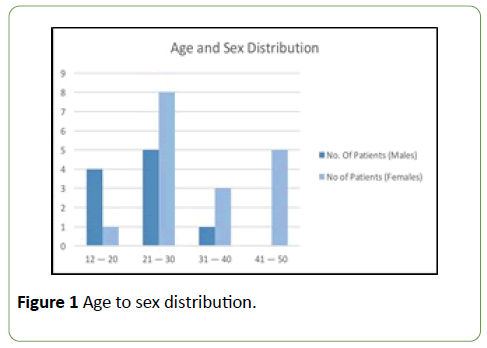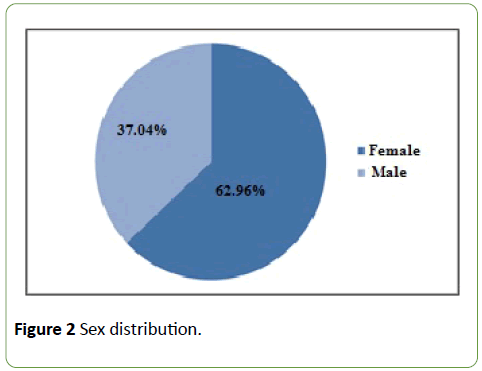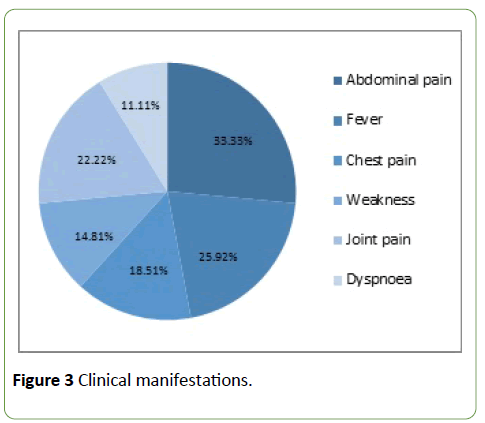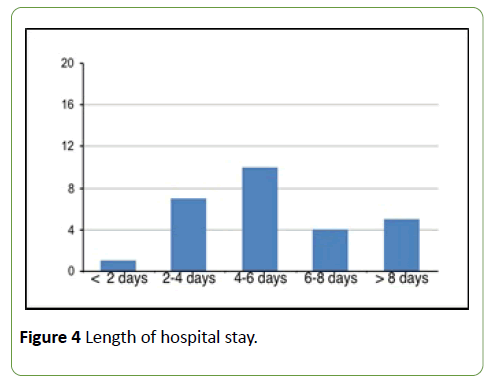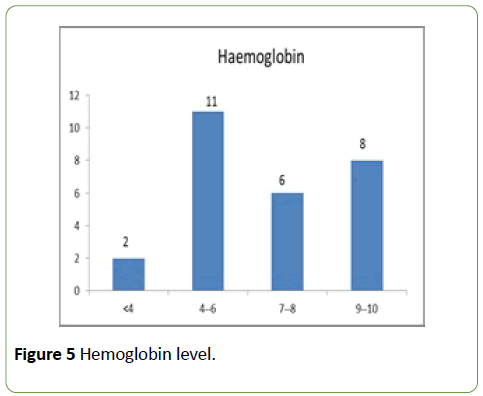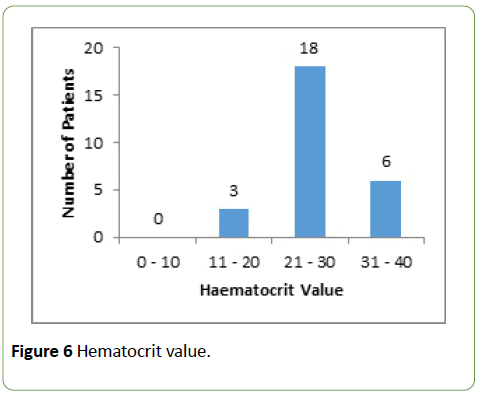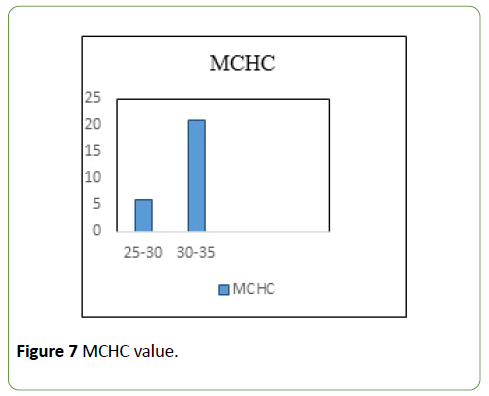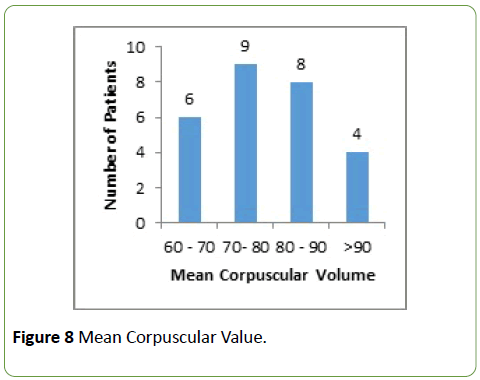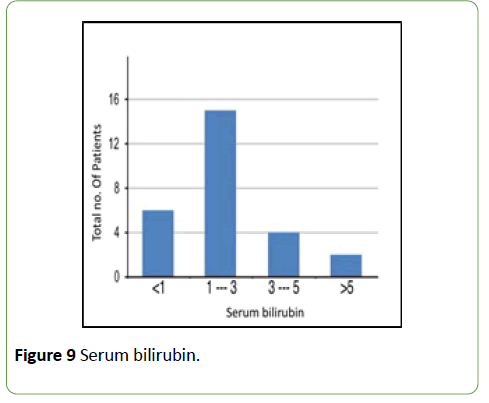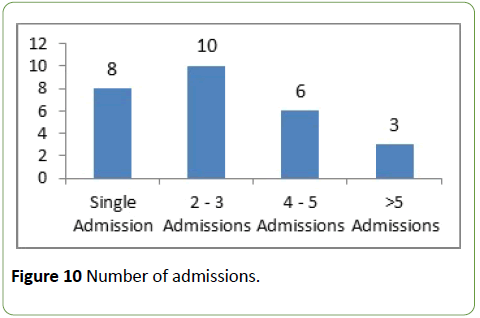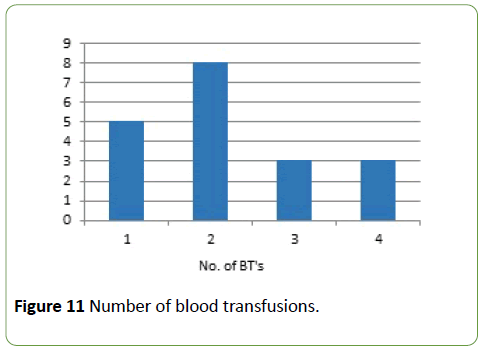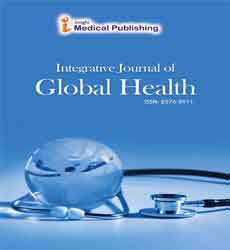ISSN : 2576-3911
Integrative Journal of Global Health
Sickle Cell Anemia: An Overview of the Neglected Blood Disorder
Abha Singh, Vasu Babu Goli, Bijaya Mohanty*, Ashok Sunder
Department of Medicine, Tata Main Hospital, Jamshedpur, Jharkhand, India
- *Corresponding Author:
- Bijaya Mohanty
Department of Medicine, Tata Main Hospital
Jamshedpur, Jharkhand, India
Tel: +91-7763807140
E-mail: bijayamohantytmh@gmail.com
Received date: August 25, 2017; Accepted date: September 28, 2017; Published date: October 03, 2017
Citation: Singh A, Goli VB, Mohanty B, Sunder A. Sickle Cell Anemia: An Overview of the Neglected Blood Disorder. Integr J Glob Health. 2017, Vol.1 No.3:13.
Copyright: © 2017 Singh A, et al. This is an open-access article distributed under the terms of the creative Commons Attribution License, which permits unrestricted use, distribution and reproduction in any medium, provided the original author and source are credited.
Abstract
Background: Sickle cell anemia or drepanocytosis is a hereditary blood disorder characterized by an abnormality in the oxygen carrying hemoglobin molecule in red blood cells caused by an abnormal and rigid sickle like shape of the cell.
Aim: The aim of the study is to evaluate the clinical profile and laboratory data of the patients admitted in the hospital and the outcome during their stay.
Material and methods: This is a retrospective study of 27 cases admitted in Tata Main Hospital, Jamshedpur from April 14 to March 15. The data included clinical presentations, hematological profile, age distribution, treatment, re-admission and the final outcome.
Results: Out of the total 27 patients admitted male to female ratio was 1:1.7 with maximum admissions in 20-30 years age group. The clinical features in order of frequency were abdominal pain (33.33%), fever (25.92%), chest pain (18.51%), weakness (14.81%) and 11.11% each with joint pain and dyspnoea. Most of the patients had hemoglobin level ranging between 4-6 gm/dl on admission. Re-admission reported in order of frequency were 37.04% patients with 2-5 admissions, 14.81% patients with more than 5 admissions and only 2 patients (7.41%) had single admissions in the financial year 2014-2015. Conclusion: Pain was the most common clinical symptom seen in patients with sickle cell anemia followed by fever and weakness which resulted in repeated admissions besides blood transfusions for correction of anemia.
Keywords
Sickle cell anemia; Dyspnoea; Vaso occlusive crisis
Introduction
Sickle cell anemia is a genetic disorder, caused by mutation in the hemoglobin encoding gene. It is caused due to substitution of Valine for Glutamine at the sixth position of the beta chain of hemoglobin [1,2]. This mutated and defective hemoglobin is less soluble and after deoxygenation undergoes polymerisation causing distortion of red blood cells [3] leading to occlusion of microvasculature, resulting in acute complications and chronic organ damage. Inheritance of the sickle cell trait follows an autosomal recessive pattern.
Phenotypically, only persons with double recessive genes of sickle cell (ss homozygote) manifest disease while the heterozygotes (AS) are referred as carriers. The latter are asymptomatic and generally not aware of the diseased gene they carry. Sickle cell anemia is distributed widely in Africa, Asia and the Middle East, the parts of the world where malaria is endemic [4].
Nearly 20 million people suffer from sickle cell anemia in India which is 50% of world population and was first described among tribal groups in South India [5-12] but is now recognized to be widespread, especially in Central India where the prevalence in different castes and communities varies between 9.4-22.2% [6,13,14]. According to the surveys conducted, the prevalence of sickle gene is 0-18% in north eastern India, 0-33.5% in western India and 1-40% in southern India [15]. The clinical manifestations of sickle cell anemia (SCA) begin early in life and continue with an increased incidence of adverse events coincident with the physiologic decline in fetal hemoglobin (HbF). Vaso-occlusive pain episodes are one of the predominant clinical features associated with SCA.
Known to be an acutely anemic state with 60% of its women affected by it, Jharkhand has yet not witnessed a comprehensive survey on this serious health hazard and therefore there is an urgent need to do a well-designed and large-scale study involving most of its areas.
This is a pilot study on a very genuine and intricate health problem where our work describes the clinical profile, hematological characteristics and efficacy of treatment in adults with sickle cell anemia attending a specialized hospital of Jamshedpur.
Aim
This study is aimed at reviewing some hematological and clinical parameters in sickle cell anemia patients admitted in Tata Main Hospital, Jamshedpur, the steel city in the state of Jharkhand. There seems to be a paucity of data from this state as compared to Orissa where a lot of studies have already been done to assess the complications and outcome of Sickle cell anemia.
Inclusion criteria
All patients above 12 years of age who have previously been diagnosed with sickle cell anaemia (by blood smear using 2% sodium metabisulphite and Hemoglobin electrophoresis by HPLC) with a positive family and sibling history of SCD admitted in the medical wards were included in the study.
Exclusion criteria
All medical conditions known to increase bilirubin level (such as viral hepatitis, cirrhosis, infectious mononucleosis, carcinoma of pancreas etc.) and known alcoholics were excluded from the study.
Materials and Methods
This is a retrospective observational study conducted in the Department of Medicine, Tata Main Hospital, Jamshedpur, from April’14 to March’15 which is a secondary care hospital catering to a wide group of population both urban and rural. The study participants were recruited after a written consent and clearance from our ethics committee. The study group consisted of 27 proven cases of sickle cell anemia, who were admitted in the medicine ward either from emergency or from out-patient department. A detailed history and thorough general physical examination was carried out in all cases as per the predesigned proforma. The hemoglobin and hematocrit value along with a battery of investigations to detect crisis and organ failure including chest X-ray and ultrasonography of abdomen were carried out. Treatment strategies and clinical outcomes like length of stay, re-admissions, complications and mortality were looked for records of these patients were evaluated for relevant clinical information and complications associated with sickling and vaso-occlusion were categorized and recorded. All the patients were treated for any complications if present due to SCD. Data was collected, compiled and later was analyzed using Epi Info software.
Results
A total of 27 patients with sickle cell disease were selected for the study out of which 10 (37.04%) were male patients and rest 17 were female (62.96%) with M:F ratio of 1:1.7 (Figure 1). The age ranged from 12 to 50 years (Figure 2) with a majority of them falling between 20-30 years of age (51.85%) which is the reproductive age group of females with the mean age of presentation being 29.4 years. All the patients included in the study were from Jamshedpur and its adjoining areas.
The common symptoms with which the patients presented were abdominal pain, seen in 9 patients (33.33%) which varied in intensity and lasted from a few hours to a week. Fever seen 7 patients (25.92%) presented with fever. Chest pain was present in 5 patients (18.51%) who developed bone crisis and acute chest syndrome, weakness found in 4 patients (14.81%) which was mainly due to anemia. Anemia was universally present in all patients varying in intensity from mild, moderate, to severe. Various crisis including vaso-occlusive crisis with bony pains were present in 22.22% with 14.81% of them having a few pain episodes while 7.40% had more crisis episodes resulting in an increase in length of stay and also the number of re-admissions. Dyspnoea was observed in 3 patients (11.11%) and was due to anemia, acute chest syndrome and pulmonary infection (Figure 3). The oldest patient in our series was a 50 year old female who presented with multiple joint pain and mild anemia. The clinical manifestations and severity were generally mild in most of the patients in this study but caused absenteeism from work, decreased work output and morbidity with no mortality rate.
The abdominal ultrasonography finding showed 55.55% patient with hepatomegaly due to engorgement of sinusoids by aggregates of sickle cells resulting in elevated bilirubin and hepatic tenderness suggestive of painful crisis (Table 1). 44.44% had splenomagaly, 22.22% had gall stones and 3.33% had a shrunken spleen (Figure 4).
| Hepatomegaly | 55.55% |
| Splenomegaly | 44.44% |
| Gall Stone | 22.22% |
| Shrunken Spleen | 3.70% |
Table 1: Ultrasound abdomen findings.
The length of hospital stay of the sickle cell patients varied from 1 day to more than 8 days with majority staying between 4-6 days which was the mean length of hospitalization (Figure 5) The main cause of increased length of stay was attributed to uncomplicated vaso-occlusive pain crisis while acute chest syndrome and anemia were labelled as other causes for prolonged hospital stay as it required mechanical ventilation in some (3.70%) and recurrent blood transfusions for correcting anemia.
Hemoglobin ranged from 3.8-10 gm/dl with a mean value of 7.9 gm/dl with maximum patients having hemoglobin level ranging between 4-6 gms/dl (Figure 6), MCV ranged between 60-100 fl with a mean value of 80.3 fl (Figure 7), MCH is between 20-26 pg with a mean value of 25.6 pg, MCHC ranged from 28-33 pg with a mean value of 31.94 pg; mean heamatocrit value is 25.46% with 18 patients having value between 21-30% (Figure 8) and Reticulocyte count is 5-26% (Figures 9 and 10).
Re-admissions were seen in 60% of patients with 12% having more than five admissions (Figure 11). 67% of readmissions were due to painful crisis. Secondary infections and anemia attributed to 21% and 12% of re-admissions [16-18].
Majority of the patients were Hindus accounting to 88.8%. Six patients belonged to the tribal group of Jharkhand and 4 were Christians.
Treatment
All patients were treated symptomatically. Intravenous fluids were given to correct dehydration in vaso-occlusive cases along with NSAID and narcotic analgesics [18]. Antibiotics were given to correct infections as per the clinician’s judgement. Patients were put on drug therapy with Tab Hydroxyurea 10-30 mg/kg per day after fulfilling the criteria (more than 3 episodes of acute pain resulting in hospital admission and recurrent or severe chest syndrome) as higher levels of foetal hemoglobin (HbF) and lower leukocyte counts are thought to be beneficial in patients with SCD [19]. Anemia was corrected by giving Folic acid supplementation and blood transfusions as and when required, which in this study had 70.37% patients requiring it.
Discussion
The problems of sickle cell disease (SCD) arise in people from their early childhood, deteriorating the quality of life and also reducing the life expectancy of the patients. While the carrier leads a normal life, the homozygous patient suffers from various complications such as anemia, frequent infection, fever, hand-foot syndrome, stroke, acute chest pain, vasoocclusive crisis, splenomegaly, hepatomegaly, renal failure, leg ulcers etc., the severity varying from patient to patient [9-11]. The clinical features observed in our study in the order of frequency were abdominal pain (33.33%), fever (23.92%), chest pain (18.51%), anaemia (14.81%), vaso occlusive crisis (22.22%) and dyspnoea (11.11%).
More number of females were noted in this study with most of them in the reproductive age group unlike other studies where males out-numbered females. The reason behind this may be the extra attention earned by females because of the additional burden of pregnancy which predisposes them to frequent crisis and blood loss during their menstrual cycles.
The low hemoglobin levels in sicklers may be due to a chronic hemolytic process, blood loss due to hematuria [20], burden of multiple pregnancies and nutritional deficiencies because of low socio-economic status. The hemoglobin value ranged between 3.8-10 gm/dl in our study with a mean of 7.9 gm/dl, the maximum patients having a level ranging between 4-6 gm/dl which was in accordance to the study by Swarnkar et al.
The MCV value ranges between 60-100 fl with the mean value being 80.3 fl which was also observed by Swarnkar et al. Normally sickle cell disease patients are at a critically balanced state of vitamin B12 and folic acid, therefore, even a slight increase in demand due to increased erythropoiesis due to chronic hemolysis or hematuria and pregnancy can precipitate the deficiency state, leading to macrocytosis, hence the high values, especially in females. The average MCHC value was 31.94 pg with no relation to either sex or age.
The ultrasound abdomen a standard screening procedure for assessment of pathological changes occurring in abdominal organs showed 55.55% patient with hepatomegaly followed by splenomegaly (44.4%), gall stone (22.22%) and shrunken spleen (3.70%) which was also observed by study conducted by Mohanty. Gall stones detected in 22.22% patients in our study were in accordance with the finding of Lachman et al. and Karayalcin et al. who detected stone in SCD patients in 29% and 17% respectively [21]. These ultrasonography findings are similar with the study published by Papadaki et al.
The length of stay in the hospital varied from 1 day to more than 8 days with an average of 4-6 days which was in accordance to the study conducted by Nicole Artz et al. The main reasons attributed to it were vaso-occlusive crisis, acute chest syndrome and anemia which required repeated blood transfusions in some patients. In our study 67% of readmissions were because of vaso-occlusive crisis.
The painful vaso-occlusive events were dealt with aggressive hydration, anti-inflammatory and narcotic analgesics and were treated with drugs like Hydroxyurea to manage the complications as this drug is able to modify the pathogenesis of the disorder [15,18]. Besides giving Folic acid supplementation for correction of anemia, these patients needed to have regular blood transfusions which exposed them to high risks for infections and iron overload. Recurrent blood transfusions results in high level of iron in serum which can be damaging to the organ systems such as endocrine organs, hepatic parenchyma and cardiac myocytes by reticulo endothelial system (ROS) mediated lipid peroxidation and iron deposition [16,17].
Limitations
The study included only 27 diagnosed cases of Sickle cell anemia and could not derive proper boundaries for the given parameters. It would, eventually, if larger figures for accurate cut off values are taken. Poor patient compliance resulted in loss of long term monitoring of symptoms and treatment.
Conclusion
Sickle cell disease is prevalent in and around Jamshedpur with affection of tribal and nontribal groups and needs intensive surveys to be carried out for better understanding of the root cause to undertake preventive and prophylactic measures to decrease morbidity and mortality.
Vaso occlusive crisis is a very common complication of sickle cell disease which usually results in frequent admissions, prolonged hospital stay and chronic absenteeism. This needs to be identified early and with comprehensive medical care and management approach the health status can be improved considerably.
Thus, to conclude, early detection of the disorder, genetic counselling, preventive measures in children, therapeutic interventions and public awareness and education are extremely useful for improving the quality of life.
References
- Ohene Frempong K, Steinberg MH (2001) Clinical Aspects of Sickle Cell Anaemia in Adults and Children. In: Steinberg MH, Forget BG, Higgs DR, Nagel RL (eds.). Disorders of Haemoglobin: Genetics, Pathophysiology and Clinical Management. Cambridge University Press, New York, USA, pp: 611-70.
- Steinberg MH (2005) Predicting clinical severity in sickle cell anaemia. Br J Haematol 129: 465-481.
- Pauling L, Itano HA (1949) Sickle cell anaemia a molecular disease. Science 110: 543-548.
- Eboh W, Van den Akker OA (1994) Antenatal care of women with sickle cell disease. Br J Midwifery 2: 6-11.
- Lehmann H, Cutbush M (1952) Sickle-cell trait in southern India. Br Med J 1: 404-405.
- Shukla RN, Solanki BR (1958) Sickle-cell trait in Central India. Lancet 1: 297-298.
- Ajit C, Gorakshakar (2015) Epidemiology of Sickle Hemoglobin in India. pp: 1-5.
- Swarnkar K, Kale A, Lakhkar B (2010) Clinico-Epidemiological And Hematological Profile Of Sickle Cell Anemia With Special Reference To Penicillin Prophylaxis In A Rural Hospital Of Central India. The Internet J of Epid 9: 2.
- Platt OS, Brambilla DJ, Rosse WF, Milner PF, Castro O, et al. (1994) Mortality in sickle cell disease. Life expectancy and risk factors for early death. N Engl J Med 330: 1639-1644.
- Frewin R, Henson A, Provan D (1997) ABC of clinical haematology. Haematol Emergencies. BMJ 314: 1333-1336.
- Serjeant GR, Serjeant BE (2001) Sickle Cell Disease. Oxford University Press, New York.
- Mohanty D, Pathare AV (1998) Sickle cell Anemia-the Indian scenario. Ind J Hematol Blood Transfus 16: 1-2.
- Bunn HF (1997) Pathogenesis and treatment of sickle cell disease. N Eng J Med 337: 762-769.
- Balgir RS, Sharma PK (1988) Distribution of sickle cell hemoglobin in India. Ind J Hematol 6: 1.
- Rahimy MC, Gangbo A, Ahouignan G, Alihonou E (2009) Newborn screening for sickle cell disease in the Republic of Benin. J Clin Pathol 62: 46-48.
- Goddard JG, Sweeney GD (1983) Ferric nitrilotriacetate: a potent stimulant of in vivo lipid per oxidation in mice. Biochem Pharmacol 32: 3879-3882.
- Hershko C, Link G, Konyn AM, Cabantchik ZI (2005) Objectives and mechanism of iron chelation therapy. Ann NY Acad Sci 1054: 124-135.
- Wankhade (2013) Diverse Clinical manifestations in Sickle Cell Anemia: study in District Amravati, MS India. J Blood Disorders Transf 4: 1.
- Singh H, Dulhani N, Kumar BN, Singh P, Tiwari P (2010) Effective control of sickle cell disease with hydroxyurea therapy. Indian J Pharmacol 42: 32-35.
- Wong YW, Elliott Mills D, Powars D (1996) Renal failuer in sickle cell anaemia. Haematol Oncol Clinics of N Am 10: 1321-1331.
- Mohanty J, Narayan J, Bhagat S, Panda BB, Satpathi G, et al. (2004) Sonological evaluation of abdominal organs in sickle cell crisis in Western Orissa. Indian J Radiol Imaging 14: 247-251.
Open Access Journals
- Aquaculture & Veterinary Science
- Chemistry & Chemical Sciences
- Clinical Sciences
- Engineering
- General Science
- Genetics & Molecular Biology
- Health Care & Nursing
- Immunology & Microbiology
- Materials Science
- Mathematics & Physics
- Medical Sciences
- Neurology & Psychiatry
- Oncology & Cancer Science
- Pharmaceutical Sciences
